As we transition into an online era, Plicnik Space Initiative proposes to test dissonances between physical and virtual spaces. Launched as an open call in June 2020, the project invited artists to propose works to be shown aboard the D02.2 spacecraft with the aim to test ways in which participants would interact with both illusionary spatial constraints and how they would respond to distinct spatial narratives. Monumental in scale, the D02.2 caricatures museums. Each space aboard the craft challenges the functionalities surrounding institutional practices; the Reserve space humorously deconstructs a seamless white cube, and the Dehumidifier and Largescale humidifier – essentially a desert and rainforest – mirror the attempts of art institutions to preserve artworks.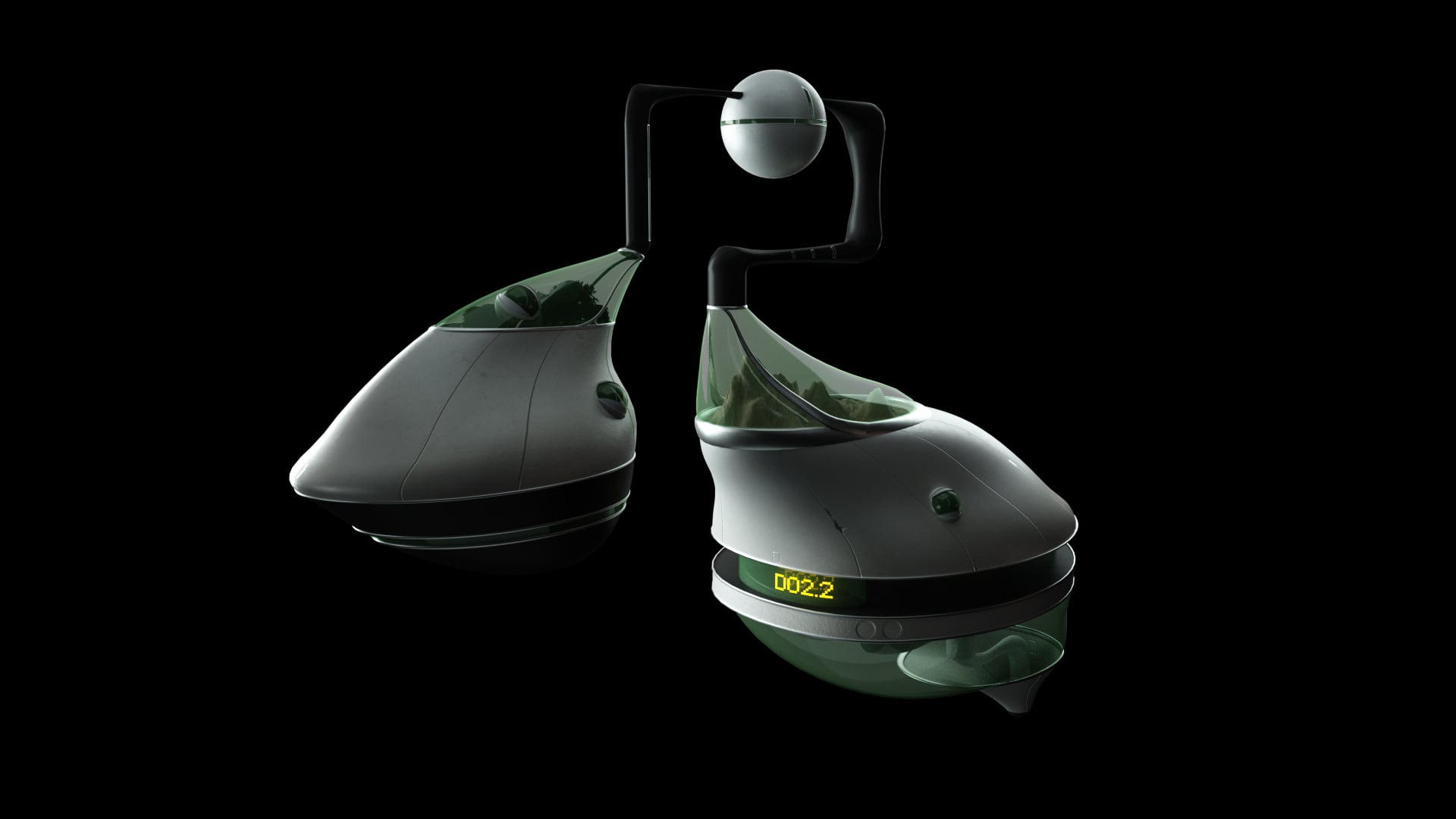
Proposing an exhibition in outer space – a site that remains largely unexplored – encouraged artists to imagine new scenarios. Space often lends itself to speculative fiction and can remind us of the current commodity crisis, embodying a fetishist representation of technocentric visions of progress. In this light, artists were prompted to imagine a future art ecosystem.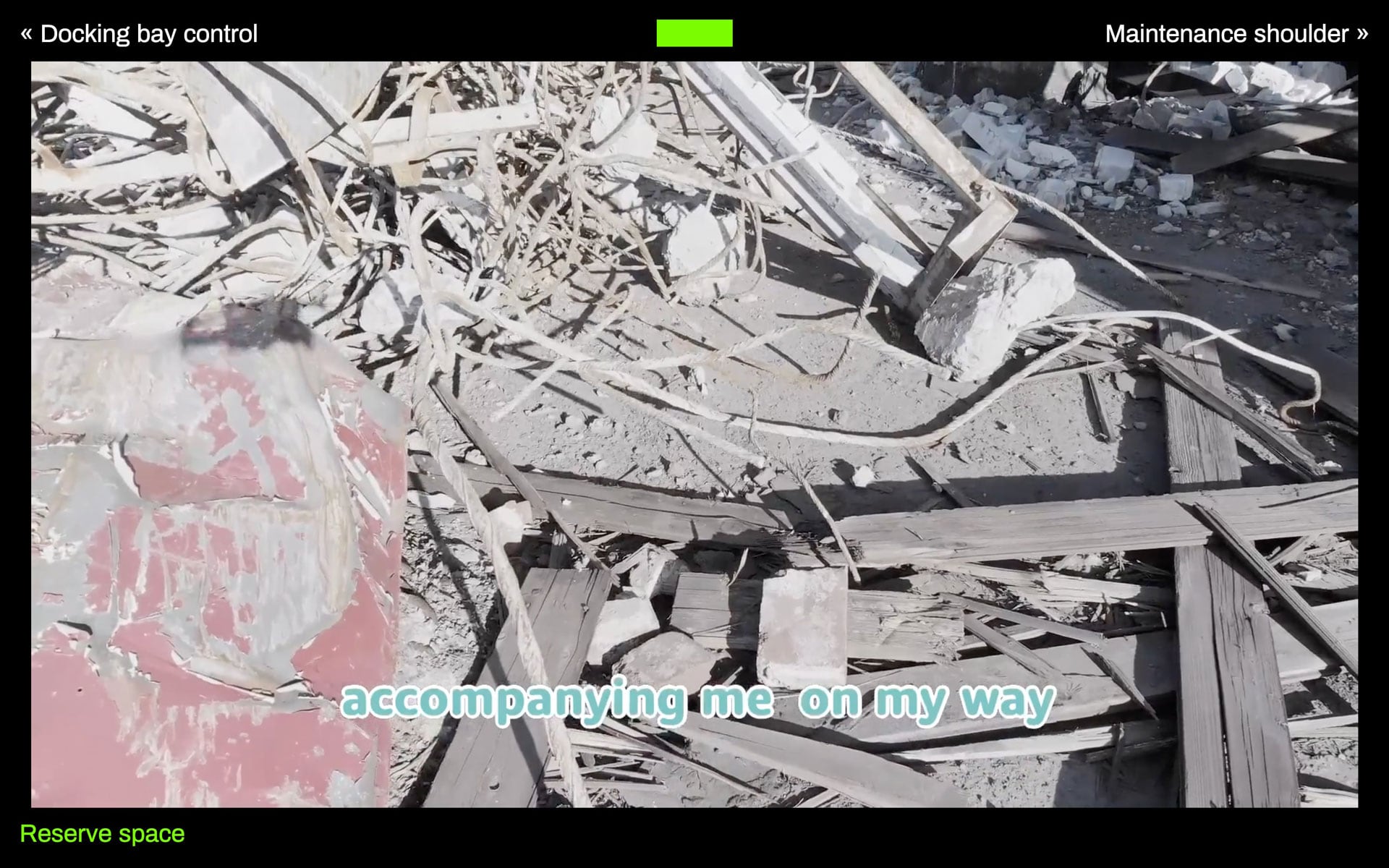
The description that first featured on our website asked the following: “What would the art collection of our main sponsor Istochnikov look like?” This revealed tensions between the public and the private and underlined the opaque economic systems we are entangled in. In this view, Anish Kapoor Fan Fiction by Laura Yuile provides an insight into the mass production and commodification of art objects. In a fictional vein, Jake Laffoley and Lionell Guzman propose the commercialisation of the “hyperglot cap”, showcasing space as a new economical market that is “yet to be conquered” in Dear Aliens. In contrast, Adam Hines-Green equips the craft with a port of call, inspired by his ongoing research pinpointing various port of calls in hospitals, and analysing the concept of relaxation whist being “on-call” (i.e. available).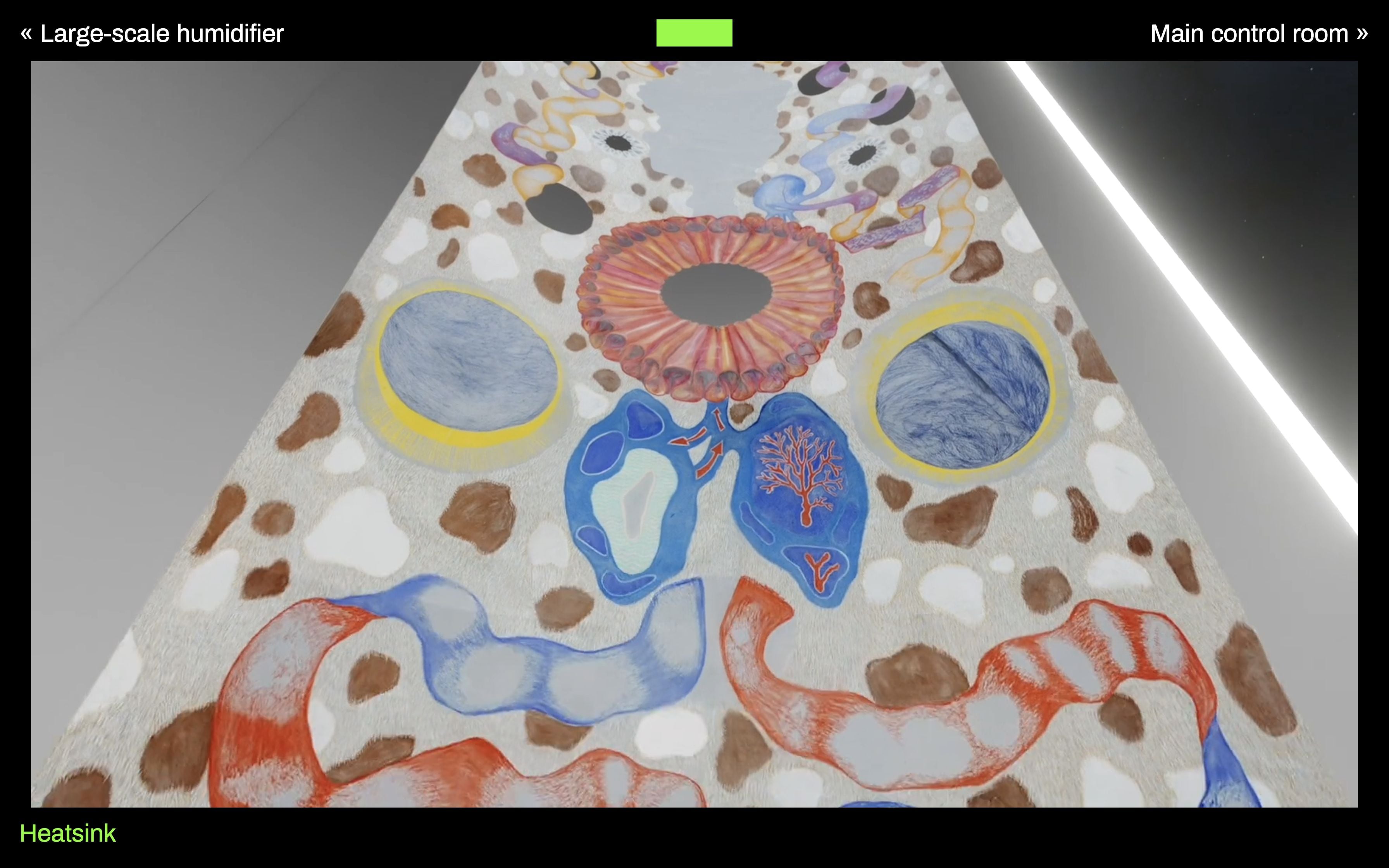
The hosting of art collections on spacecraft is not novel: in 1977, the Golden Record aboard the Voyager introduced the idea of cultural legacy in space, preceded by Pioneers 10 and 11, which carried small metal plaques identifying their time and place of origin for the benefit of other potential space farers. The idea of preservation, in this way, became a concern for artists on the D02.2. Resembling an amphora assembled from digital fragments, Vorster and Ip’s The stylus is in the correct position to play the record from the beginning explores the narrative potential of objects that were used to chronologically situate an archaeological wreck, prior to the development of more sophisticated dating methods.
Similarly, the spaceship has been envisaged as a time capsule by Ellie Wyatt and Lucy Hutchinson, who host a series of speculative objects aboard the Dehumidifier, transforming it into an archaeological site. On the left-hand side of the craft, Tekla Gedeon’s Extended Forest presents new ways to interact with our current natural resources by modelling an alternative method of environmental guardianship. Echoing this is Crustacean Combustion, a new fuel for the Tubular Engine. Designed by Charles Stanton-Jones, Crustacean Combustion explores cultural themes such as renewable energy, ecological development, and resource management.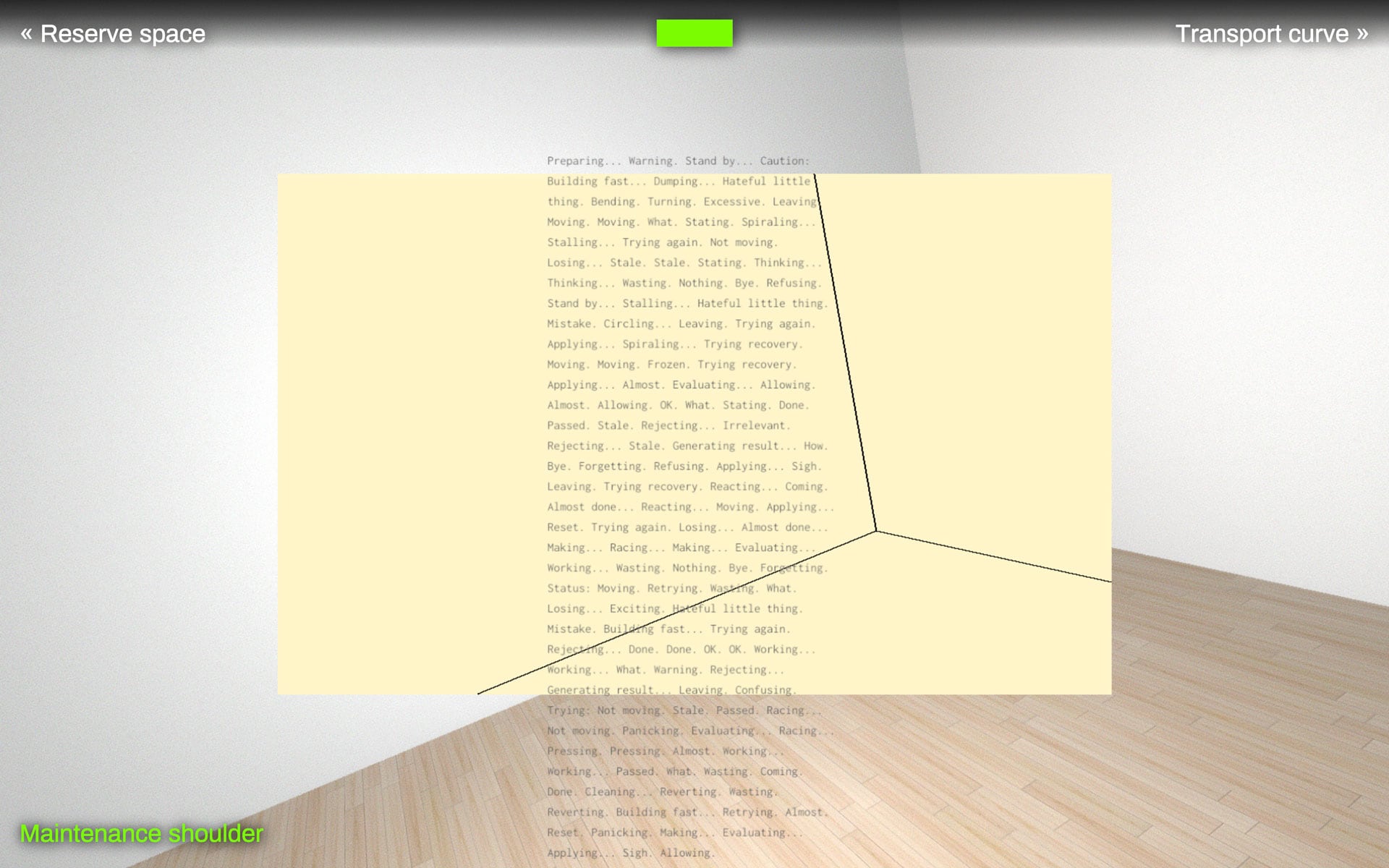
The synergistic development of space migration and questions relating to the survival chances of the human species sparked debates concerning the hybridisation of man and machine. Sangjin Kim’s I know this steak is not real explores ideas around self-sufficiency and, like Paul Wiersbinski’s Commitments to Deathlessness, which composes a fictional AI archive, questions human agency. Taking this further is Ryan Kuo, whose Dumb Desire exposes new methods of creating artworks by laying the foundations of a video piece that generates itself in real-time, whilst narrating its own conception. In Broken Waters by Lucy Woodhouse the complexities of the body’s relationship with the technological is exposed through a reinterpretation of the Transport curve, which parallels it with the female reproductive organs.
The mechanical is a central mode of articulation of the spaceship. From this perspective, the Reserve space has been transformed by Jana Kerima Stolzer and Lex Rütten as an archival space where earthly landscapes have been recorded via a drone’s eye. Along similar lines, the videogame Pigxell, designed by Zhengzhou Huang and housed in the Overload space, acts as an interface for the audience to trade furniture by sharing photographs of their body parts, highlighting problems with surveillance and the consumerification of our social lives.
Parallel to accentuating the dissonances between physical and virtual spaces is the exploration of dream-like characteristics in deep space and the virtual. Exposing the fabric of the virtual, Marc Blazel’s Under Perpetual Construction deconstructs the idea of ‘non place’, whilst Robert B Lisek’s Viral#C, which combines the activity of computer and biological viruses by transforming Lisek’s DNA code with the codes of existing viruses, addresses cultural concerns engrained in the material.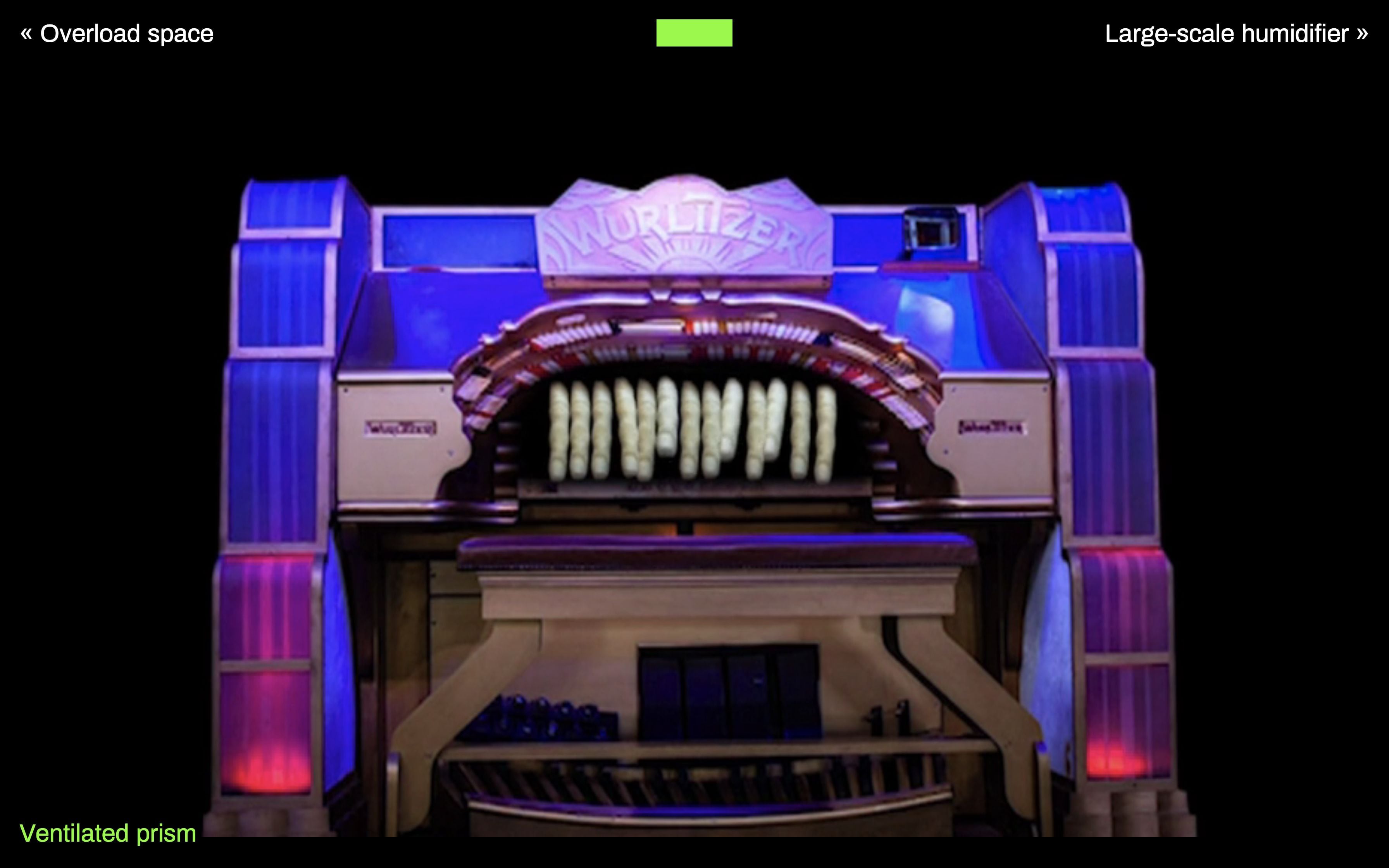
Appertaining to these concerns are the spiritual and ethereal investigations located in the Ventilated prism and the Heatsink: containing a colour organ that plays itself, Chloe Langlois’ Spectral Extractor Fan attempts to communicate through the void, and Lara Smithson’s Silent Voice contains three costumes which respond to Medieval and Renaissance paintings. Whilst posing such questions as ‘do coincidences exist?’ or ‘are all events as Henri Bergson once suggested, always interconnected?’, Lindsay Seers and Keith Sargent’s Anomaly 4 hints at a cosmic principle with disturbing implications.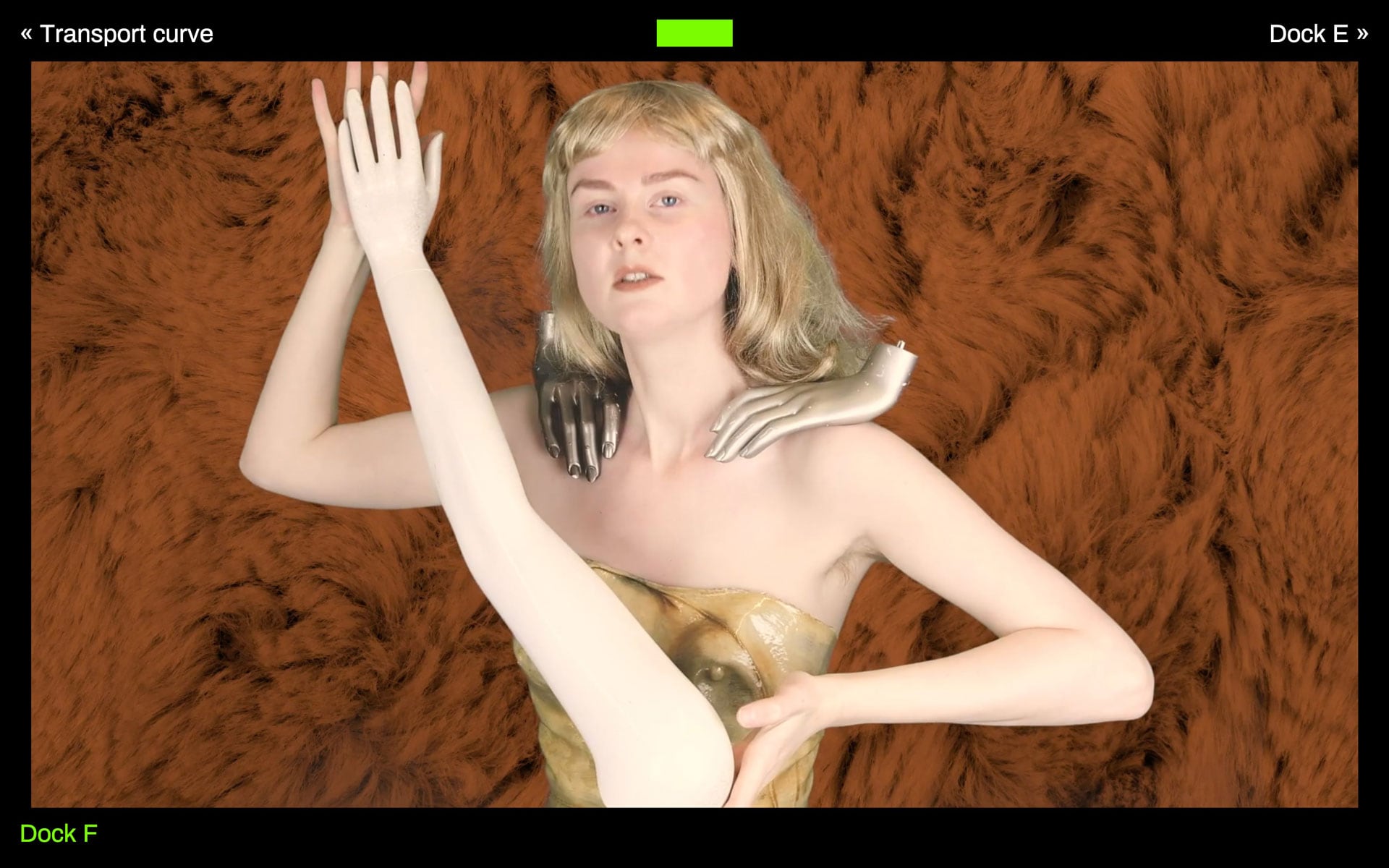
Often exploited as a utopic symbol, the conquest of space has fuelled international dispute. The Joints and docking bay of the craft host works which touch on this dual aspect of desire. In Savage, MV Brown interprets erotically charged material whilst seeking to reject binary oppositions around categories of desire. Nine-sum sorcery by Mi†︎ra, similarly touches on the object of desire that defines the means of destruction, using conflict and human greed to free itself.
In its aim to challenge the current pace of art shows both physically and on the web, the exhibition was hosted on our servers for the duration of one year.
Featuring Marc Blazel, Adam Hines-Green, Zhengzhou Huang, Chloe Langlois, Tekla Gedeon, Lara Smithson, Paul Wiersbinski, Jake Laffoley & Lionell Guzman, Jana Kerima Stolzer & Lex Rütten, Ryan Kuo, Lucy Woodhouse, MV Brown, Mi†︎ra, Laura Yuile, Beatrice Vorster & Heyse Ip, Ellie Wyatt & Lucy Hutchinson, Lindsay Seers & Keith Sargent, Sangjin Kim, Robert B. Lisek and Charles Stanton-Jones